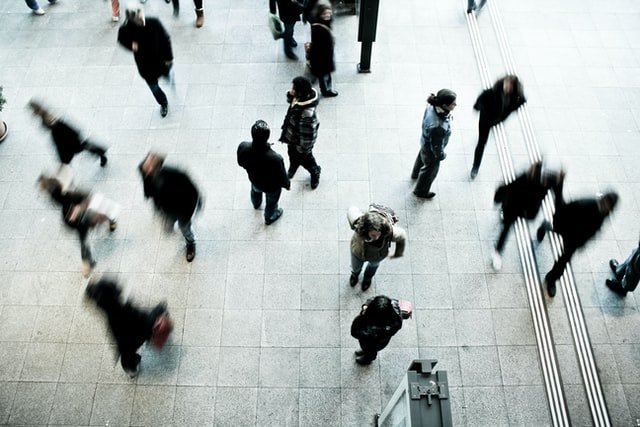Community transmission of COVID-19 has extended beyond Auckland’s borders, with new cases confirmed in the rural Waikato town of Tokoroa.
Director-General of Health Dr Ashley Bloomfield said there are 12 new confirmed and one probable case in the community, including two in Tokoroa.
The SMC asked experts to comment on the virus’ spread through Aotearoa.
Associate Professor Garry Nixon, Department of General Practice and Rural Health, University of Otago, and Rural Doctor, Dunstan Hospital, comments:
“The emergence of cases in rural communities is concerning. New Zealand’s rural towns are vulnerable from a health perspective. They have on average the oldest age structure, the lowest socioeconomic status and highest proportion of Māori of any of New Zealand’s geographic categories; and they often rely on limited and already stretched healthcare services.
“The different alert levels being applied to different regions makes sense, but managing movement between regions is now critical. Every effort needs to be made to avoid the virus travelling from Auckland to regional and rural New Zealand.
“It’s the wrong time to travel to the bach in the Coromandel or fly to Queenstown for a ski holiday. This includes trying to beat lockdown deadlines.”
No conflict of interest.
Professor Shaun Hendy, Director of Te Pūnaha Matatini, comments:
“It was more likely than not that the outbreak would have moved out of the Auckland region, especially to a neighbouring region such as the Waikato.
“Hopefully these new cases have been caught early and the risks of further onwards transmission as low, but people in the Waikato should now be extra vigilant about symptoms, staying home from work and seeking a test if they are unwell.”
Conflict of interest statement: Te Pūnaha Matatini is funded by the TEC, but is also currently working under an MBIE contract to supply COVID-19 modelling to government.
Associate Professor Siouxsie Wiles, School of Biological Sciences, University of Auckland, comments:
“As soon as the first cases of community transmission of COVID-19 were announced, it was clear we needed to brace ourselves for more cases to follow. Because there is a lag time between people contracting the virus and showing symptoms, and because people are infectious for a few days before they begin to have symptoms, it’s likely there are more people infected who don’t yet realise it.
“Given we have been enjoying life at Alert Level 1 we have been socialising and travelling – both things that allow the virus to transmit between people and enable to move it around the country. It is reassuring that with testing having ramped up so far, all but one positive case are linked to the same cluster.
“It is really important now that our testing capacity continues to focus on testing people with symptoms so we can determine if there are any cases not linked to the cluster.
“For the rest of us, we need to play our part in bringing this new outbreak under control. That means following the alert level restrictions for the area we are in and wearing face masks while we are out of our homes. We’ve shown we can bring COVID-19 in New Zealand under control before and we can do it now.”
No conflict of interest.
Simon McCallum, Senior Lecturer, Wellington Faculty of Engineering, Victoria University of Wellington, comments:
“With the increase in cases and with two outside of Auckland tracing our contacts is critical. Downloading the COVID Tracer app and using it can help save our family members.
“Given the desire need to get a ring around this outbreak, it is probably a good idea to turn on location services on your Android or iPhone. There is a loss of privacy, but for a short time this is probably a reasonable move. This will allow you to look at your movements and report everywhere you have been. This is on top of using the COVID Tracer app.”
Conflict of interest statement: “I unsuccessfully stood for selection as a candidate for the Labour Party in the Taieri Electorate.”
Clive Aspin, Ngāti Maru (Hauraki), Senior Lecturer, School of Health, Victoria University of Wellington, comments:
“Māori experience significant challenges to good health and wellbeing. These are likely to be made worse by an over reliance on an app tracker to prevent COVID-19.
“Some points to consider with regard to Māori health and an app tracker:
“The COVID Tracer App is just one of several initiatives in preventing the spread of COVID. If it is not implemented widely and evenly, it is likely to increase disadvantage and, as a consequence, disparities.
“Glitches need to be ironed out for the technology to be effective. My sources tell me that the uptake of the app among older Māori is likely to be low.
“Māori who have access to younger whānau members or trusted health care workers are more likely to use the COVID Tracer app than those who are isolated and have poor access to services.
“Māori living in rural and remote locations are likely to suffer significant disadvantage and therefore, the app must be seen as only one of a raft of public health measures to prevent further spread of COVID-19.
“Māori living in rural and remote locations may experience significant disadvantage as a result of an over reliance on an app. This could be made worse by poor or non-existent wifi coverage.
“Officials need to acknowledge the barriers to healthcare experienced by Māori and must work to eliminate these for an app tracker to work.”
No conflict of interest
